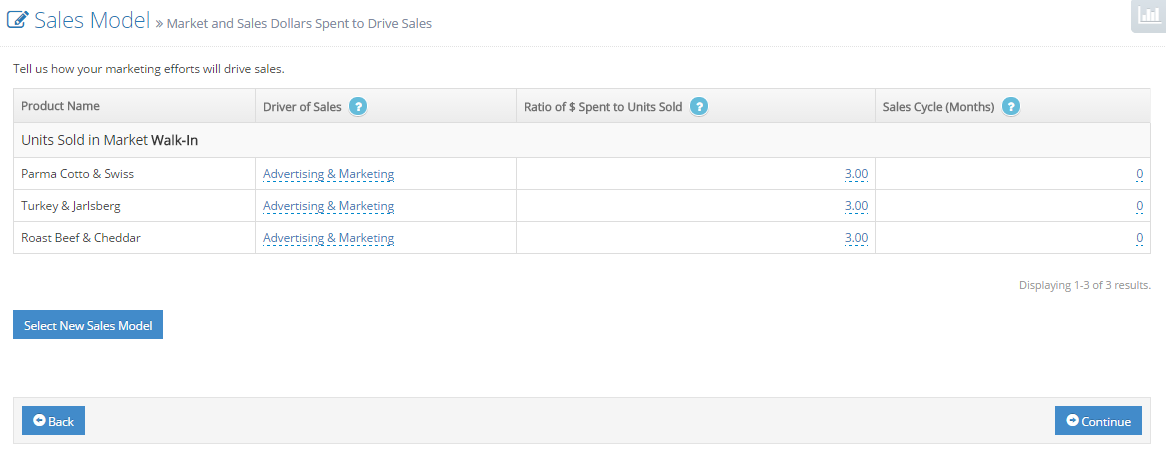User Tools
Use Marketing and Sales Dollars Spent to Drive Unit Sales
Help with this Page
This is a bottom-up technique for predicting during your planning stage how much revenue your company will make. It works by you stating certain assumptions about how you obtain sales of your products. Once you start leading your company, you will refine these assumptions so you can obtain a more accurate understanding of expected revenues.
Fundamental to understanding how this revenue-prediction technique works is understanding that revenue growth can occur in only three ways:
- You can spend marketing and sales dollars to attract new customers. This is called the paid growth model; it is also called customer acquisition or prospecting.
- You can take actions that cause existing customers to spend more. This is called the sticky growth model; it is also called organic growth.
- Your current customers can refer others to become customers. This is called the viral growth model
This revenue prediction technique assumes that 100% of your revenue is the result of the first, i.e., you have no sticky growth, and you have no viral growth. If you believe that your company will experience organic and/or viral growth, we recommend that you switch to marketing and sales technique to drive new customer acquisition. To model your company using the current technique, you only need to define a few key assumptions:
1. Expense Item: Some products sales will occur as the result of your direct efforts. Assuming that these direct efforts cost money, what are you spending this money on? Pay-per-click advertising? Postage? Purchased email lists? Just make sure that this is an expense items you have already defined in your list of expenses and that it has been allocated to marketing and sales in the advanced settings.
2. Ratio of Dollars Spent to Units Sold. For each product that you sell, how much does it cost you to get that sale? Note that the previous assumption (dollars spent on the expense item) divided by this assumption equals the number of products you will sell in a given time period. This is a similar concept to Customer Acquisition Cost (CAC), but not identical; CAC is the cost to acquire a customer whereas this ratio is the cost to sell a single product.
3. Sales Cycle: How many months transpire between your expenditure and the sale of the product?
The screen looks as follows:
Additional Questions:
What is a sustainable growth engine?
Why can't I find an expense item on the drop down list?
How can I drive revenue growth via paid marketing and sales?
How do I add a product to the sales model?

